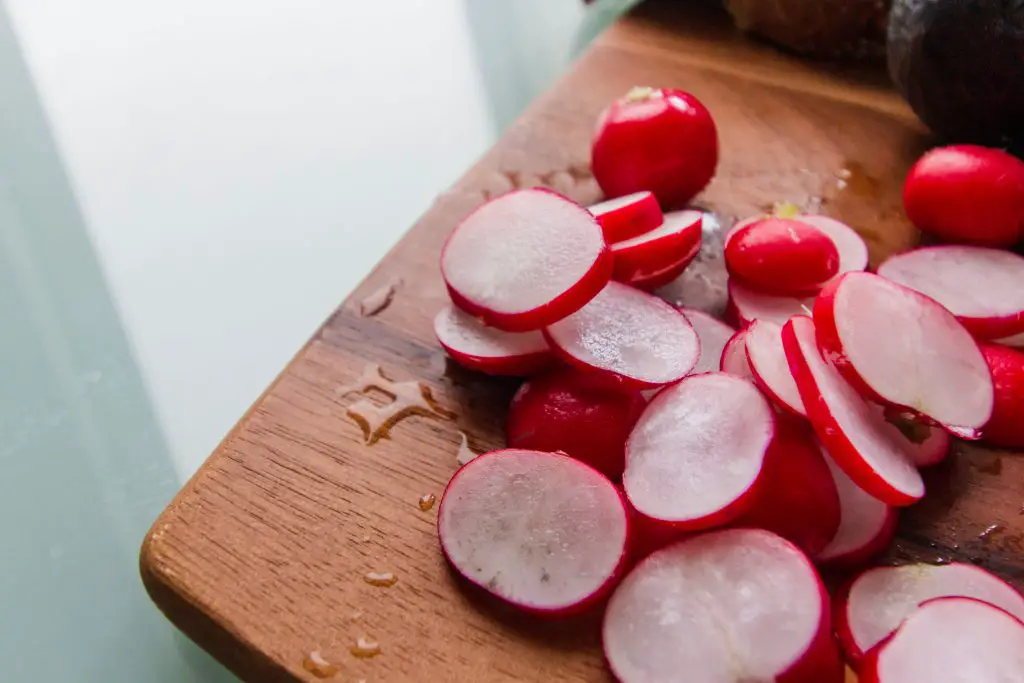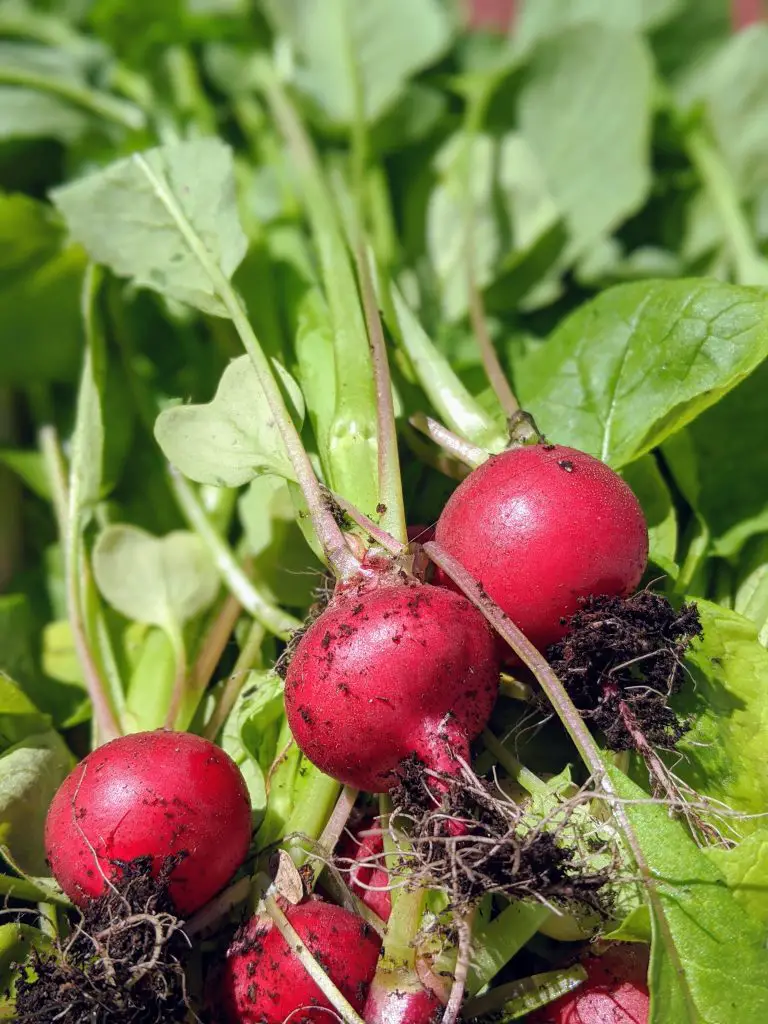How Long Does It Take For Radish Seeds To Sprout? How Does Temperature Effect It? Radishes are a quick salad crop to grow in the garden to add a little bit of spice to your dishes. However, if you are considering growing radishes in your garden one of the most common questions asked is how long do the seeds take to germinate and how is it affected by temperature?
Radishes are an extremely fast germinator and will appear in less than 5 days when the temperatures are above 68°F (20°C) according to a study published by the University of California. However, below 41°F (5°C) the seeds will not germinate.
| Days To Germinate | Temperature (°F) | Temperature (°C) |
| – | 32 | 0 |
| 29.0 | 41 | 5 |
| 11.2 | 50 | 10 |
| 6.3 | 59 | 15 |
| 4.2 | 68 | 20 |
| 3.5 | 77 | 25 |
| 3.0 | 86 | 30 |
| – | 95 | 35 |
| – | 104 | 40 |
Due to their relatively fast germination and generally fast-growing nature radishes are often used as a catch crop between other plants to get a very quick harvest and make the most of the space available in your garden. Common examples of this are sowing radishes along the ridges created by making trenches for potatoes or where carrots are sown they are often used to mark the rows before they come up.
Aside from being relatively quick to crop they are also an extremely hardy vegetable that can tolerate temperatures as low as 10°F (-12°C). This makes them useful as a winter as well as a summer crop.

How To Grow Radishes
As mentioned above radishes are an extremely fast-growing vegetable that will produce a crop in as little as 4 weeks in the right conditions. As a result of this speed, radishes are generally sown directly into the garden rather than planted into a seed tray, though when the temperature is below 50°F (10°C) outside it is worth planting them into a seed tray as the speed of germination slows down significantly and therefore the rate which you get a crop.
In terms of sowing the seeds they can be sown individually in a furrow in the garden directly or they can be multi-sown in a seed tray. Multi-sowing is a method used by Charles Dowding that involves sowing usually 4 to 6 seeds in the same place to produce clumps of plants. This process has several advantages over sowing seeds individually but this method is not suitable for all vegetables.
The key advantage of this is that it is faster to transplant seedlings than traditional methods and it also makes it easier to maintain the planting beds. The reason that it is faster to transplant is that 4 to 6 seedlings are planted each time you make a hole. In terms of maintenance, it is also easier because the clumps of plants tend to be further apart in the garden bed which allows a dutch hoe to be used to remove the weeds which is significantly faster than hand weeding.
To sow seeds in a tray start by filling it with good quality seed raising mix and firm this soil into the tray to a form solid plug as this will make it easier to transplant the seedlings later on. Make a planting hole using a dibber and placed 4 to 6 seeds in the hole at a depth of approximately half an inch.
To make it worthwhile to plant in a seed tray is important to keep the tray in a relatively warm location to speed up the rate of germination. Typically because of their fast-growing nature radishes only need to spend around 3 to 4 weeks in the seed tray before they can be planted out into the garden.

Alternatively, if you are planting directly into the garden the most common way to do it is to make a furrow and sprinkle the seeds approximately an inch or 2 apart and then recover the seeds with soil.
When planting in the garden the location that you should ideally select is one that gets at least 6 to 8 hours of sun per day, though, radishes will tolerate shady locations as well but their rate growth will be significantly slower.
In terms of soil conditions radish plants are really not all that fussy and will tolerate a wide range of soil conditions so ideally like all vegetables they prefer rich moist and free-draining soil that has plenty of nutrients. So if you are concerned about the quality of your soil you can always add a bag of compost to the soil before planting.
As the radishes can be susceptible to attack from slugs and snails it is advisable to also add some snail bait around the plants when they are planted to avoid any problems.
In terms of harvesting the radishes, this can be done once the size of the radish reaches around an inch wide. However, when harvesting is important to recognize that they are a fast-growing crop that also deteriorates quickly once picked so you pretty much need to eat them within a day or two otherwise they will go off.
I hope you found this article useful and have great success growing radishes at home if you have any additional questions or comments please leave them in the section below.
Relevant Articles
Are Radishes and Turnips The Same? (The Differences And Similarities)
How Long Does It Take Pea Seeds To Germinate? How Does Temperature Effect It?
How Long Does It Take Cauliflower Seeds To Germinate? How Does Temperature Effect It?
How Long Does It Take For Onion Seeds To Germinate? How Does Temperature Effect It?
